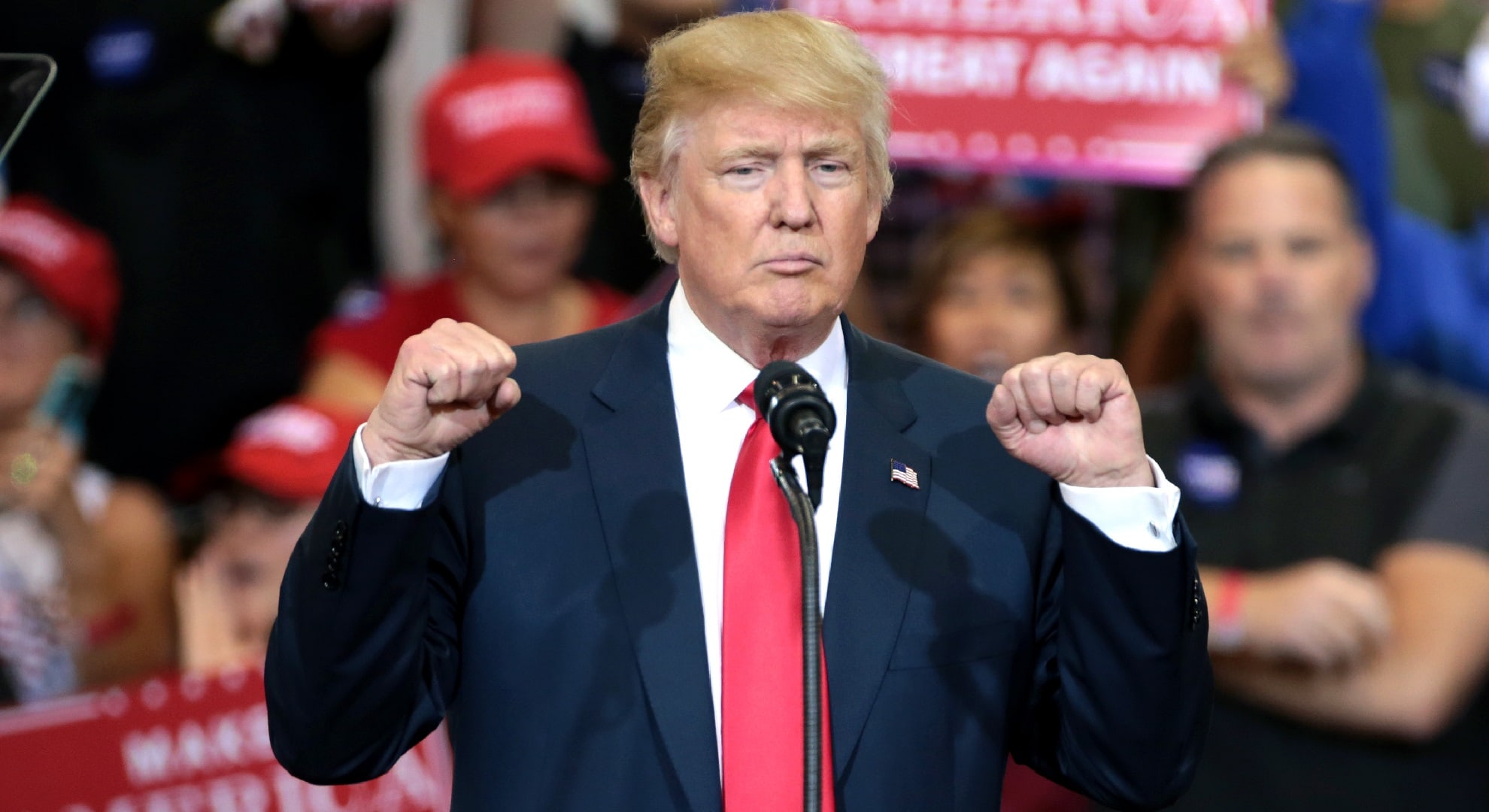If any presidential candidate is a fan of polls, it is Donald Trump. The current leader in the Republican primary loves to tout his poll numbers.
“We’re up very big in the polls – very, very big,” Trump told a convention of young conservative supporters Saturday night in West Palm Beach, Fla. at the Turning Point Action Conference.
He “retruthed” a comment from the popular conservative account “Catturd” that stated, “Turn out the lights, the party’s over.” with a photo from Interactive Poll demonstrating Trump leading his opponents at 53% (+39) over DeSantis at 14%, with the rest of the field trailing behind in single digits.
Not so fast, Donald.
All the Numbers
According to Reuters, the most recent poll from their polling service (Reuters/Ipsos) says that Donald Trump “is dominating the U.S. Republican presidential nomination contest with 47% support within his party, well above 19% for Florida Governor Ron DeSantis.” This leaves Trump with a 28-point lead over Florida’s governor.
Interestingly enough, a Qunnipiac poll released the very same day shows that Trump sits at 54%, a larger amount than the Reuters poll, but DeSantis at 25%, giving Trump a 29-point lead.
So which number is more important, the raw percentage or the spread?
The other candidates show varying support, with fluctuations of up to 7 points between the two polls.
One can become obsessed with the numbers, and the candidates do just that. I myself got dizzy going back and forth between the various figures and got tired of reading the piece halfway through.
If you make enough comparisons between all the candidates both within their own party and across party lines, you can formulate numbers to fit any conclusion you’d like.
However, the fact is, polls, particularly this early in the game, tell us very little about an ultimate outcome.
Polls – What Are They Good For?
Polls can be useful to measure public sentiment in reaction to particular events. Announcement of an indictment (take your pick when it comes to Donald Trump), a new policy, or a Supreme Court decision, for example.
Many polls do show that Trump only increases in popularity with every indictment the DOJ and the several legal authorities hand down to him.
However, in the long-term game of presidential campaigns, primaries and general elections included, such week-to-week polls mean very little in predicting who, ultimately, will take the White House.
National vs. State
In addition, as Ron DeSantis commented in a recent telephone interview, “This is state by state process. We don’t have a national primary. We’re going to have Iowa, we’re going to have New Hampshire, we’re going to have South Carolina.”
The 2016 elections proved this to be true. Polls can be a measure of popular opinion, but they do not always account for state-by-state variations or how electoral votes are calculated.
When you look at individual state numbers, Trump holds a less commanding lead over DeSantis, although it is still significant.
On Thursday, July 13, Trump led DeSantis by 24 points in an American Greatness poll in New Hampshire. Just four days later, on Tuesday, July 19, the University of New Hampshire published a poll that narrowed that gap to 14 points in favor of Trump.
As the primaries get closer, polls will increasingly show numbers by state.
How Effective Are Polls?
Let’s not forget that polls can be flat out wrong, as was the case in 2016, which determined Hillary Clinton the presidential victor, and polls for the 2020 midterms that predicted a “red wave.”
As much as polls try to collect random samples and account for errors involved in population sampling, this is not always possible. Weighting, volunteer, or self-selection bias, as well as margin of error, are all considerations that should be taken into account when looking at polling numbers.
Trying to predict human behavior, particularly humans living in today’s increasingly mentally unstable environment, will always be a challenge. People change their minds, are susceptible to click bait, and flat out lie — or in nicer terms, “say something they think people want to hear.” Still a lie.
Even with advances in technology, predicting outcomes is difficult, and one must be cautious about confusing projection from data analysis with prophecy.
All this to say, take the numbers, and everything the press says, with a grain of salt. I do not omit myself from this category.
Jennifer Galardi is the politics and culture editor and opinion writer for 19FortyFive.com. She has a Master’s in Public Policy from Pepperdine University and produces and hosts the podcast Connection with conversations that address health, culture, politics, and policy. In a previous life, she wrote for publications in the health, fitness, and nutrition space. In addition, her pieces have been published in the Epoch Times and Pepperdine Policy Review. You can follow her on Instagram and Twitter.
From 19FortyFive
The Second American Civil War Has Begun

